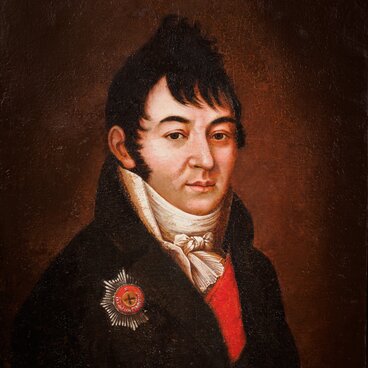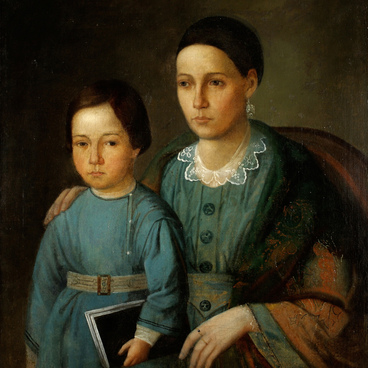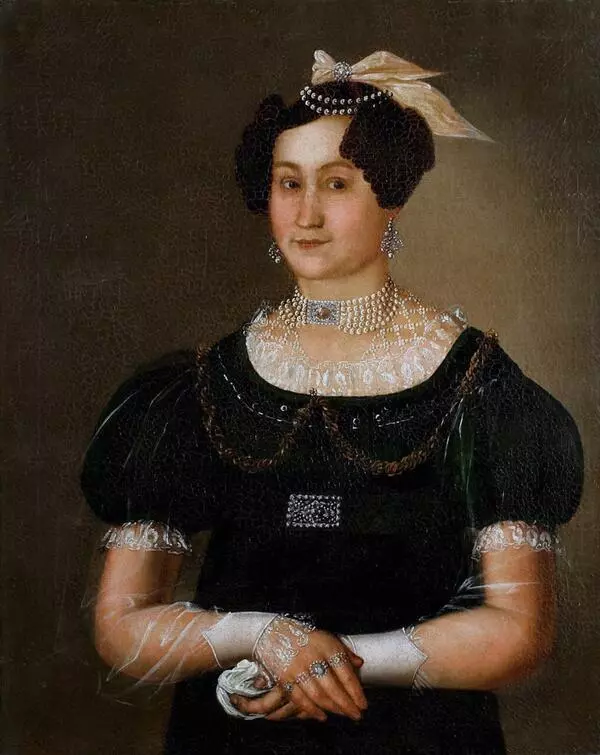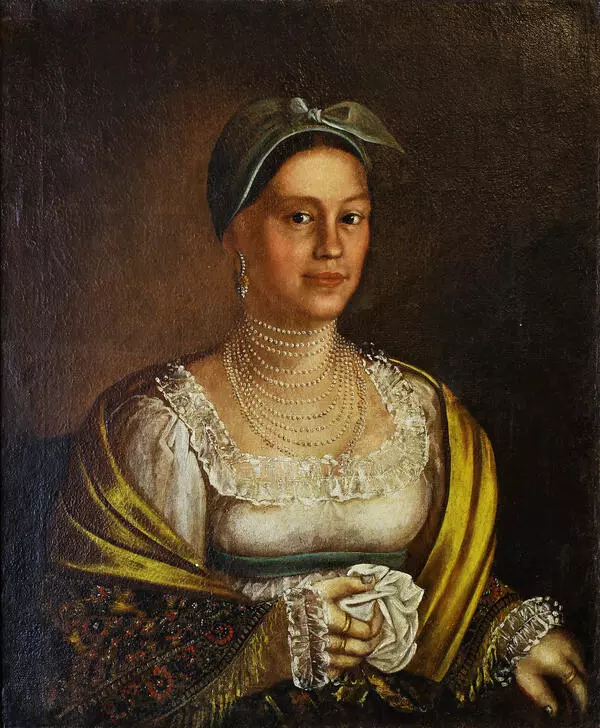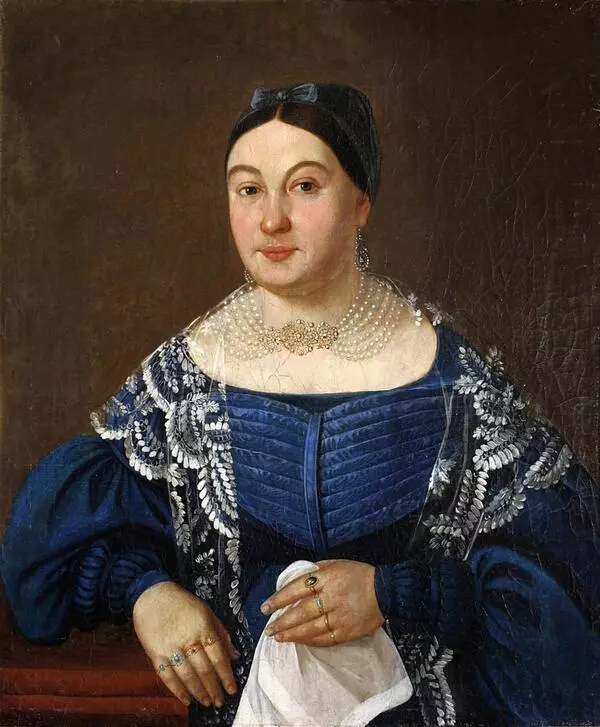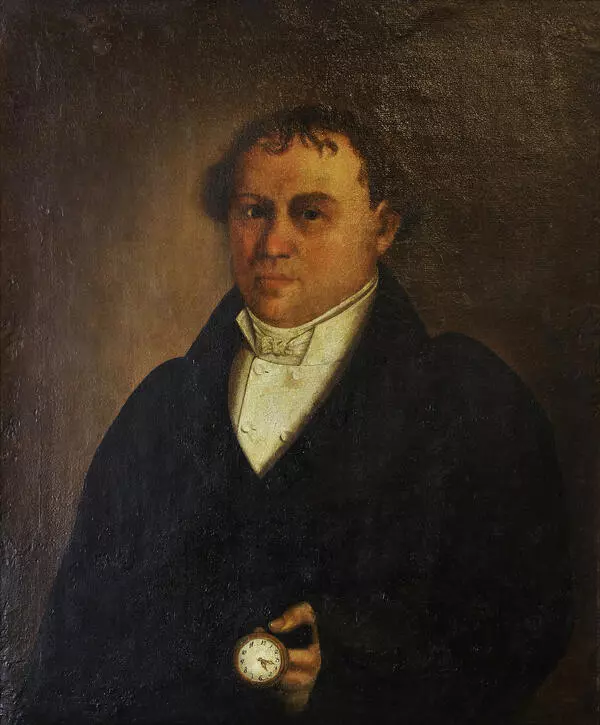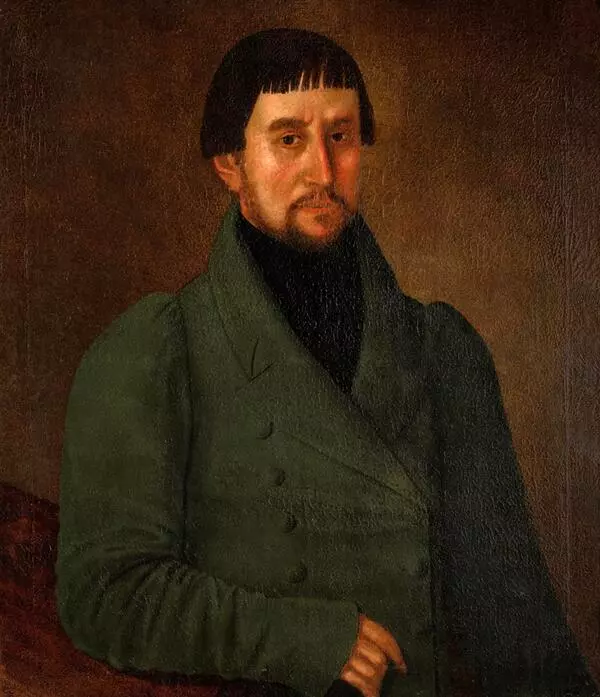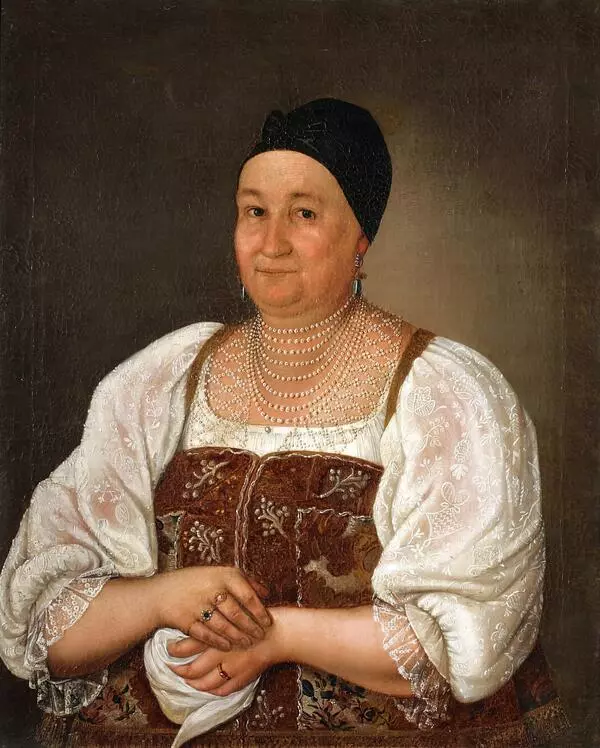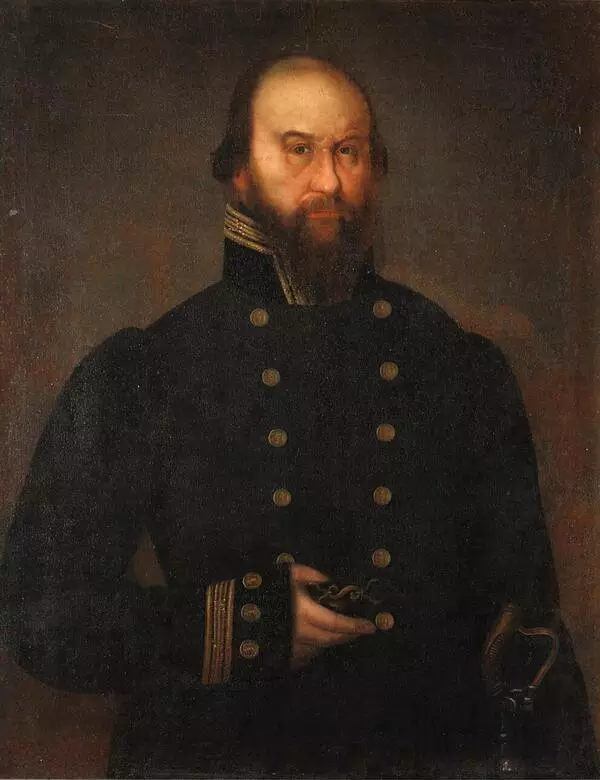This event might have been the reason for the commissioning of portraits: by doing that, Pavel’s father Matvey Sergeyevich Surin seemed to assert family continuity over the generations. At first, Ivan Tarkhanov portrayed the older generation of the Surins emphasizing their soundness and conservatism, and after that, he depicted the young couple.
Pavel Surin was still getting used to his new status. The items that accompany him in his “portrait history” reveal various facets of his inner state which seem to contradict each other. The woven watch string asserted his independence in business (which had been granted or at least promised to him by his father): he was getting used to planning his time and was likely eager to demonstrate that by taking his watch out of his pocket and opening its lid with an audible click. The monogrammed signet ring is another visual indication of his independence, the right to carry on correspondence from his own name and to apply sealing wax to his letters. However, the kerchief in the young man’s hand was extremely rare in portraits of citizens. A typical attribute of women and children, in this case, the kerchief is a reference to the man’s father because the two portraits were painted as part of one common composition — this might show that Pavel might not have become truly independent after all.
Surin Junior continued his father’s trading legacy. He described his own life in the “Chronicles of the House of Surin” which was dedicated to his children and future generations.

